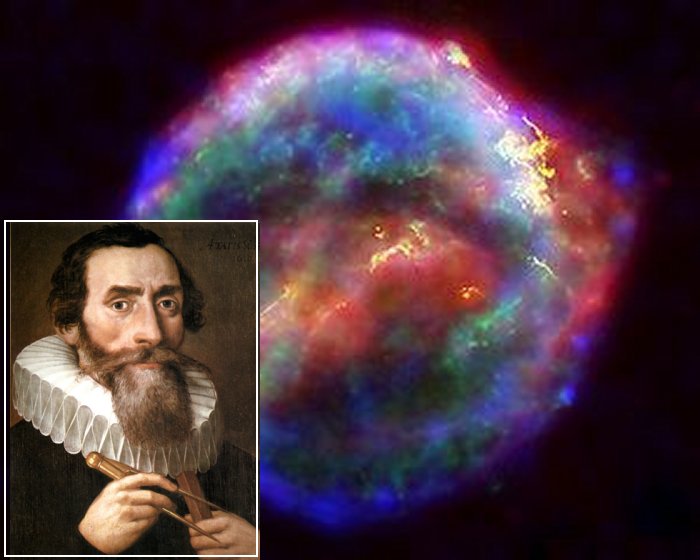On This Day In History: Astronomer Johannes Kepler Observes Supernova – On Oct 17, 1604
AncientPages.com - On October 17, 1604, German astronomer Johannes Kepler observes a supernova in the constellation Ophiuchus.
Supernova 1604, also known as Kepler's Supernova, was a supernova of Type Ia that occurred in the Milky Way in the constellation Ophiuchus.
 Johannes Kepler and A false-color composite (CXO/HST/Spitzer Space Telescope) image of the supernova remnant nebula from SN 1604. Credit: NASA/ESA/JHU/R. Sankrit & W. Blair
Johannes Kepler and A false-color composite (CXO/HST/Spitzer Space Telescope) image of the supernova remnant nebula from SN 1604. Credit: NASA/ESA/JHU/R. Sankrit & W. Blair
The most recent supernova observed by the naked eye in our galaxy occurred no farther than 6 kiloparsecs (approximately 20,000 light-years from Earth.
Visible to the naked eye, Kepler's Star was brighter at its peak than any other star in the night sky, with an apparent magnitude of -2.5. It was visible during the day for over three weeks.
The first recorded observation was in northern Italy on October 9, 1604. Johannes Kepler began observing the luminous display on October 17 while working at the imperial court in Prague for Emperor Rudolf II.
It was subsequently named after him, even though he was not its first observer, as his observations tracked the object for an entire year.
The supernova was also recorded in Chinese and Korean sources. The supernova remnant from Kepler's supernova is still an object of many studies in astronomy.
Updated on October 15, 2022
AncientPages.com




















